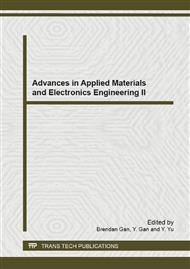p.567
p.571
p.575
p.579
p.583
p.588
p.592
p.596
p.600
Development of an Internet of Civil Infrastructure Framework
Abstract:
Nowadays, the civil infrastructures are subjected to disasters such as fires, floods, and earthquakes. Recently, the novel concept of Internet of Things (IoT) is known to be useful for managing crisis situations via providing a good disaster management and emergency response information. This paper addresses the civil infrastructure issue of health monitoring and disaster management by introducing IoT technology. A concept of internet of civil infrastructure (IoCI) framework is also proposed in this paper. The proposed framework is a three layered architecture. Among them, the top layer is a wireless sensor network (WSN) client which is deployed in civil infrastructure to perform specific tasks such as sensing, data processing, and acknowledgement. The middle layer is an information exchange web service (IEWS) through which all the information such as sensor data, structural health and location are exchanged, while the remaining layer is a mobile device based information platform for data representation, control, and event notification.
Info:
Periodical:
Pages:
583-587
Citation:
Online since:
April 2013
Authors:
Price:
Сopyright:
© 2013 Trans Tech Publications Ltd. All Rights Reserved
Share:
Citation:


